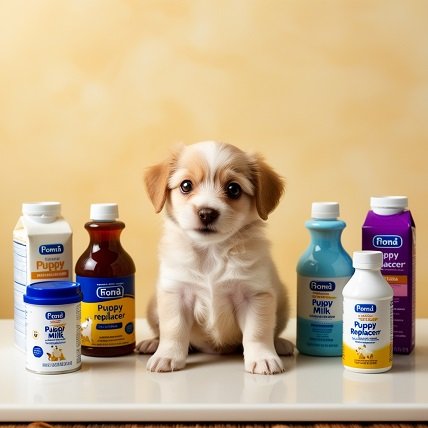Introduction
Bringing a puppy home is a joyful experience, but it also entails obligations, particularly with regard to their diet. A puppy milk replacer becomes essential if you find yourself having to care for a puppy who isn’t receiving its mother’s milk. This particular formula provides the necessary nutrients for growth and development while simulating the nutritional profile of a mother dog’s milk.
What is Puppy Milk Replacer?
A specifically designed replacement for a mother dog’s milk is puppy milk replacer. It’s made to satisfy the dietary requirements of young puppies who can’t nurse themselves to health. Essential for the growth and well-being of the puppy are proteins, lipids, vitamins, and minerals found in the replacer. Depending on the product, it can be purchased in liquid or powder form and needs to be fed either straight or combined with water.
Why Puppy Milk Replacer is Essential
The ideal combination of nutrients found in mother’s milk supports a puppy’s development, immune system, and general wellness. Puppy milk substitutes are crucial for supplying the necessary nutrients in situations where this natural source is not available. These specialty mixes offer the ideal ratio of vital nutrients that pups require in their early stages of growth. They are enhanced with lipids for energy and brain development, proteins to help in tissue growth and repair, and a variety of vitamins and minerals to promote general health and wellbeing.
Types of Puppy Milk Replacer
There are several varieties of puppy milk substitutes to suit a range of requirements and tastes. The two most popular varieties are liquid and powdered mixes. Powdered milk substitutes are more affordable and have a longer shelf life, but they must be mixed with water before feeding. To guarantee the right concentration, they do need to be prepared and mixed carefully. Because they are pre-mixed and ready to use, liquid milk substitutes are more convenient, but they also usually cost more and have a shorter shelf life.
How to Choose the Right Puppy Milk Replacer
To guarantee that the puppy’s nutritional demands are adequately met, choosing the best puppy milk substitute requires taking into account a number of factors. The puppy’s age should be the first thing to consider, as different items may be designed for different growth stages. Verify the label’s nutritional content to make sure all the necessary nutrients are there in the right amounts. Think on how simple it is to prepare as well as whether, given your lifestyle, you would rather use a liquid or powdered formula.
How to Prepare Puppy Milk Replacer
puppy milk replacer preparation must be done correctly for the puppy’s health and welfare. To find the ideal powder-to-water ratio or mixing instructions, start by carefully reading the manufacturer’s instructions. Utilize sanitized and clean tools, such as nipples and bottles, to reduce the possibility of contamination. If the recipe is powdered, stir it into warm water until it dissolves completely, being careful not to create clumps. Before feeding, always check the milk’s temperature; it should be warm but not hot, about body temperature.
How to Feed a Puppy with Milk Replacer
A careful approach and meticulous attention to detail are necessary when feeding a puppy milk replacer. Depending on their age and size, puppies need to be fed frequently—typically every two to four hours. For particular advice, refer to the feeding guidelines found on the packaging of milk replacer or speak with a veterinarian. As a puppy would feed from their mother, place them in a natural, belly-down position. For a natural and comfortable feeding experience, use a bottle with a puppy-sized nipple.
Conclusion
For a puppy’s early development, it is essential to provide them a high-quality milk substitute, particularly in situations where their mother’s milk is unavailable. Your puppy will get the vital nutrients required for growth and health if you know what kinds of puppy milk replacer are available, how to prepare and choose them, and how to give them to them properly. Keeping an eye on their development and introducing solid meals at the right moment contribute to their growth.
FAQs
Can I use regular cow’s milk instead of puppy milk replacer?
Because regular cow’s milk lacks vital nutrients and may upset your stomach, it is not a good replacement for puppy milk replacer. A formula created especially to suit the nutritional needs of puppies is needed.
How long should I feed my puppy milk replacer?
Up until they are four to six weeks old, puppies usually require milk replacer. After that, they can begin switching to solid food. The puppy’s growth and health may determine the precise length of time.
What should I do if my puppy refuses the puppy milk replacer?
Make sure the milk is the right temperature and that the nipple is suitable if the puppy refuses the milk substitute. If the problem continues, experiment with alternate feeding positions and see a veterinarian.

